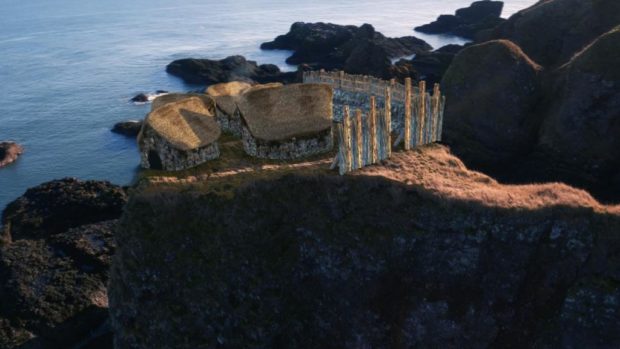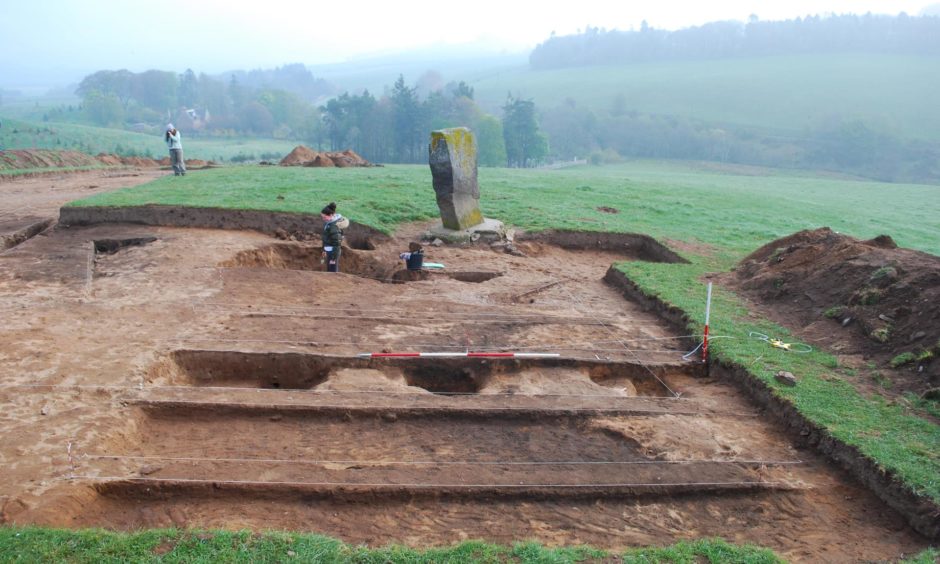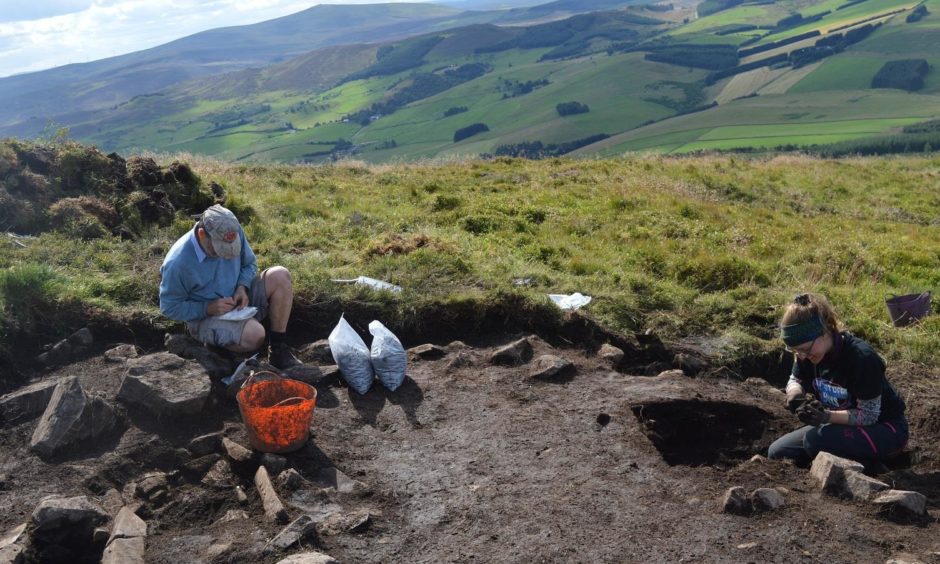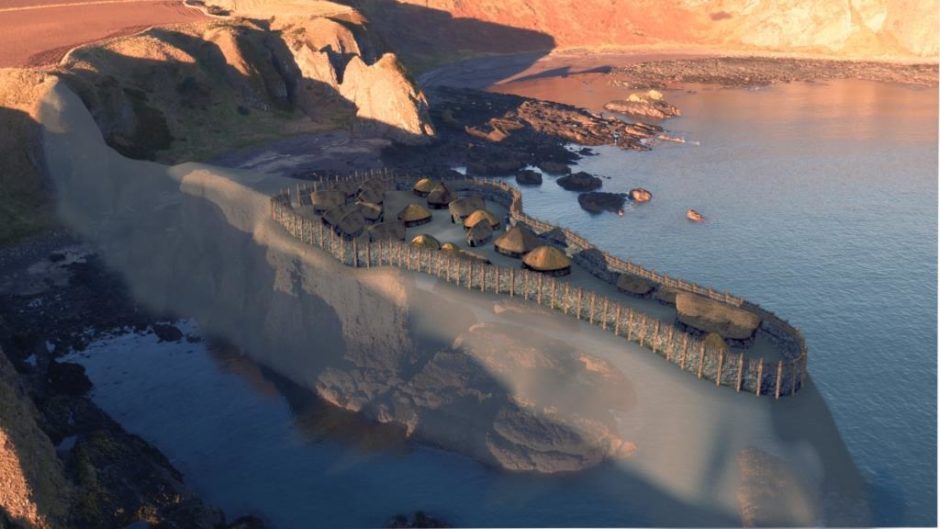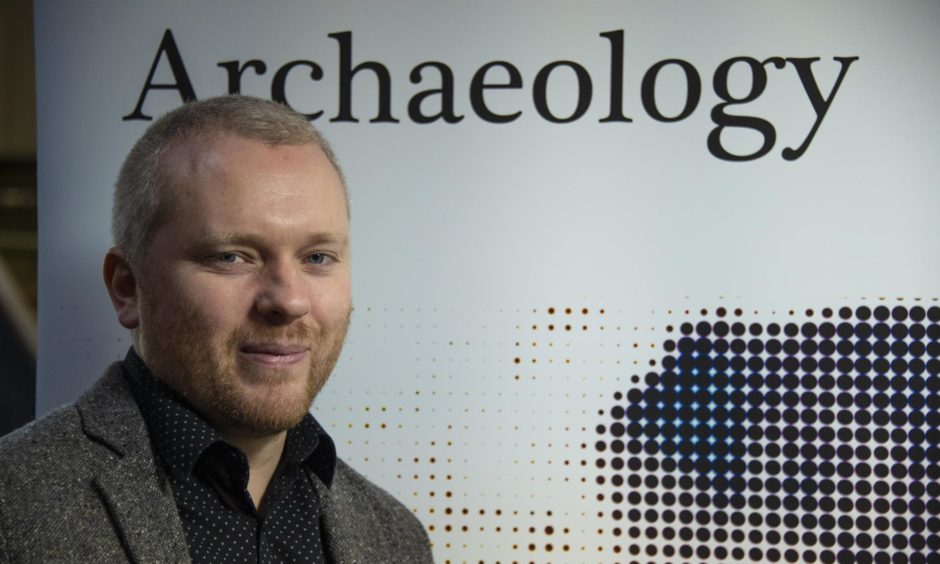North-east researchers whose pioneering work transformed our knowledge of Scotland’s Pictish past have won a coveted award.
The study “The problem of the Picts: searching for a lost people in northern Scotland”, led by Aberdeen University, received Current Archaeology’s Research Project of the Year prize for 2021.
The team’s efforts, which revealed a new picture of Scotland’s warrior kingdoms, were chosen through a public vote at the awards, which celebrate outstanding contributions to archaeology.
Since 2012, the research team led by Professor Gordon Noble has been building a very different picture of the early societies of northern Britain – given the name “Picti”, meaning “Painted Ones”, by the Romans – to that traditionally presented in popular accounts.
DNA research from 2013 showed that one in 10 Scottish men are descended from the Picts, with the concentration likely to be even higher in the Pictish heartlands of eastern Scotland between the Moray Firth and Fife.
The Picts have long been regarded as a mysterious people, leaving behind little evidence of their presence other than their iconic carved stones, and so their image in popular culture has at times been of a wild warrior tribe of painted people.
Excavations as part of the Northern Picts project have shown the Picts to have been a much more sophisticated society, trading across Europe and creating large, hierarchical settlements.
At Tap o’ Noth, an imposing hill which rises above the village of Rhynie to the north of Aberdeen, the team made their most spectacular find yet.
In 2020, using radiocarbon dating and aerial photography, they uncovered evidence which indicates that thousands of people may have lived in more than 800 huts perched close to the summit, rivalling the largest known post-Roman settlements in Britain and Ireland.
This built on the picture they began unravelling in the valley below at Rhynie, where eight years ago they found evidence for the drinking of Mediterranean wine, the use of glass vessels from western France and intensive metalwork production at a site at Barflat farm to the south of the village.
The finds suggest it was a high-status site, possibly even with royal connections.
Other finds were made at the precarious Dunnicaer sea stack close to Dunnottar Castle near Stonehaven.
The rocky outcrop, which could only be accessed with the help of experienced mountaineers, was identified as the oldest Pictish fort ever discovered, dating back as far as the third or fourth centuries, with implications for the dating of the Pictish symbol stones found there.
Meanwhile at Burghead, the largest Pictish fort previously known in Scotland, they found evidence of longhouses, Anglo Saxon coins of Alfred the Great, and complex feats of engineering which were used to construct enormous defensive ramparts.
These finds, together with their work on the Picts’ most famous legacy – their system of symbols – has radically altered the accepted face of Scotland’s warrior kingdoms.
Prof Noble said: “It was a great honour to be nominated, let alone win.
“Our project has been about trying to put the Picts on the archaeological map, and winning this award is testament to the fact that we have succeeded to some extent.
“But there’s much we can do in the coming years to ensure that progress continues.
“Since we began our work on northern Picts in 2012, we have uncovered ever-increasing evidence of Pictish society through large-scale excavations of the scale hitherto rarely undertaken.
“These have begun to underline the importance of northern Pictland and north-east Scotland to the establishment of the first kingdoms of Scotland.
“For too long this period of Scotland’s history has been a particularly poorly illuminated part of the so-called Dark Ages.
“Our work is shedding new light on this and engaging people in new ways with our Pictish past.
“We are delighted that our work on the Picts has been recognised by Current Archaeology with this award and particularly that people got behind us with their votes.”
